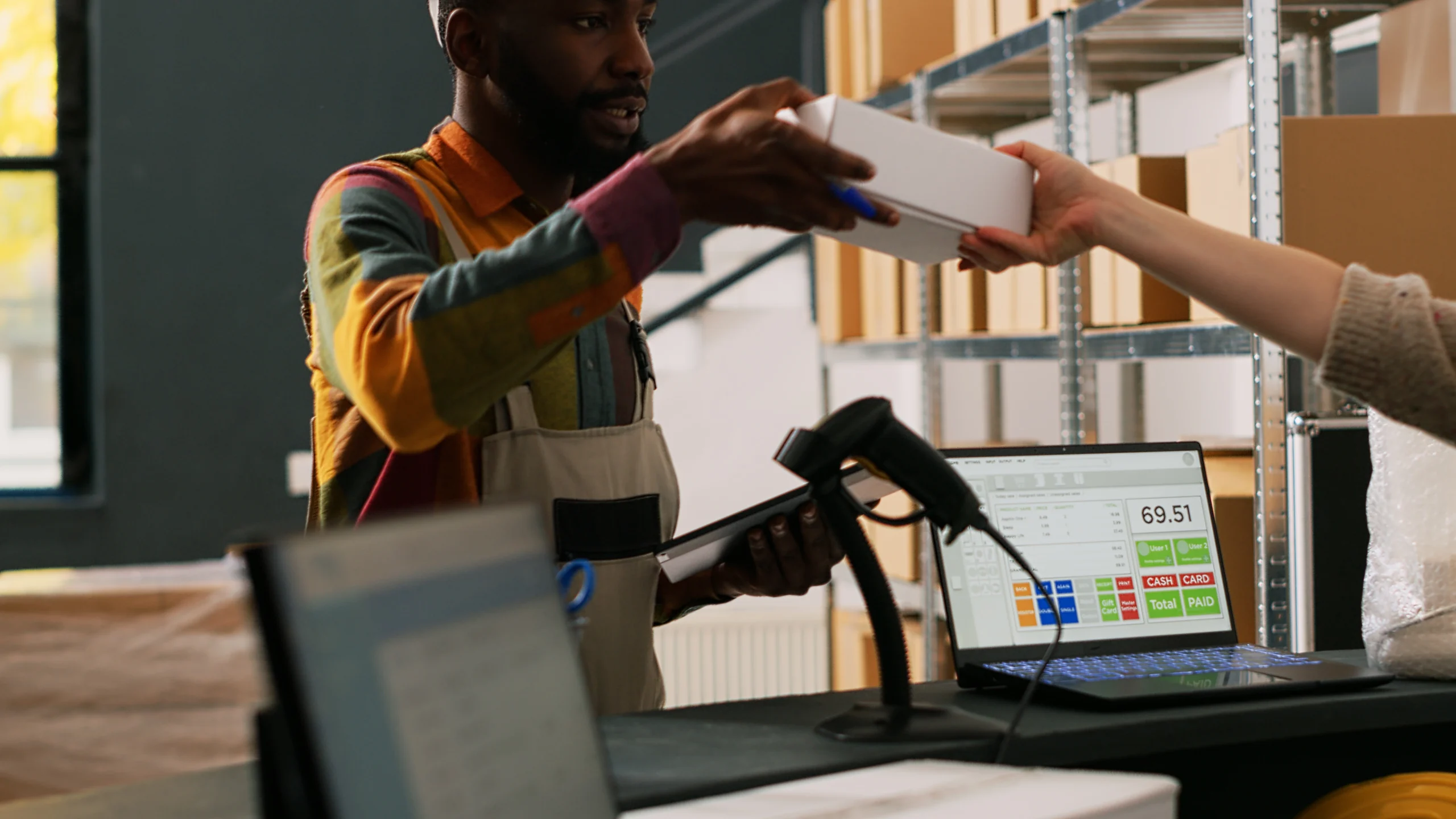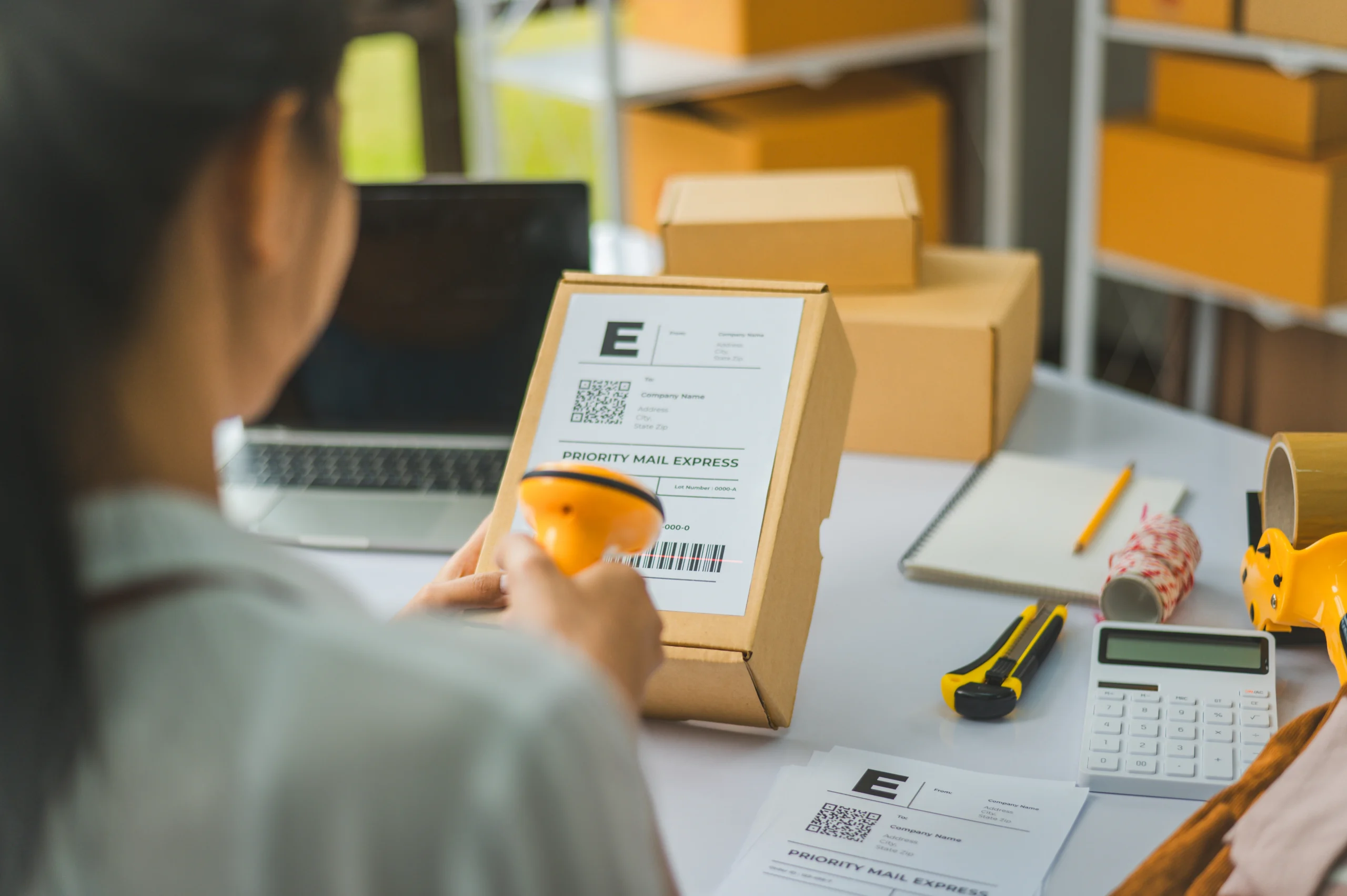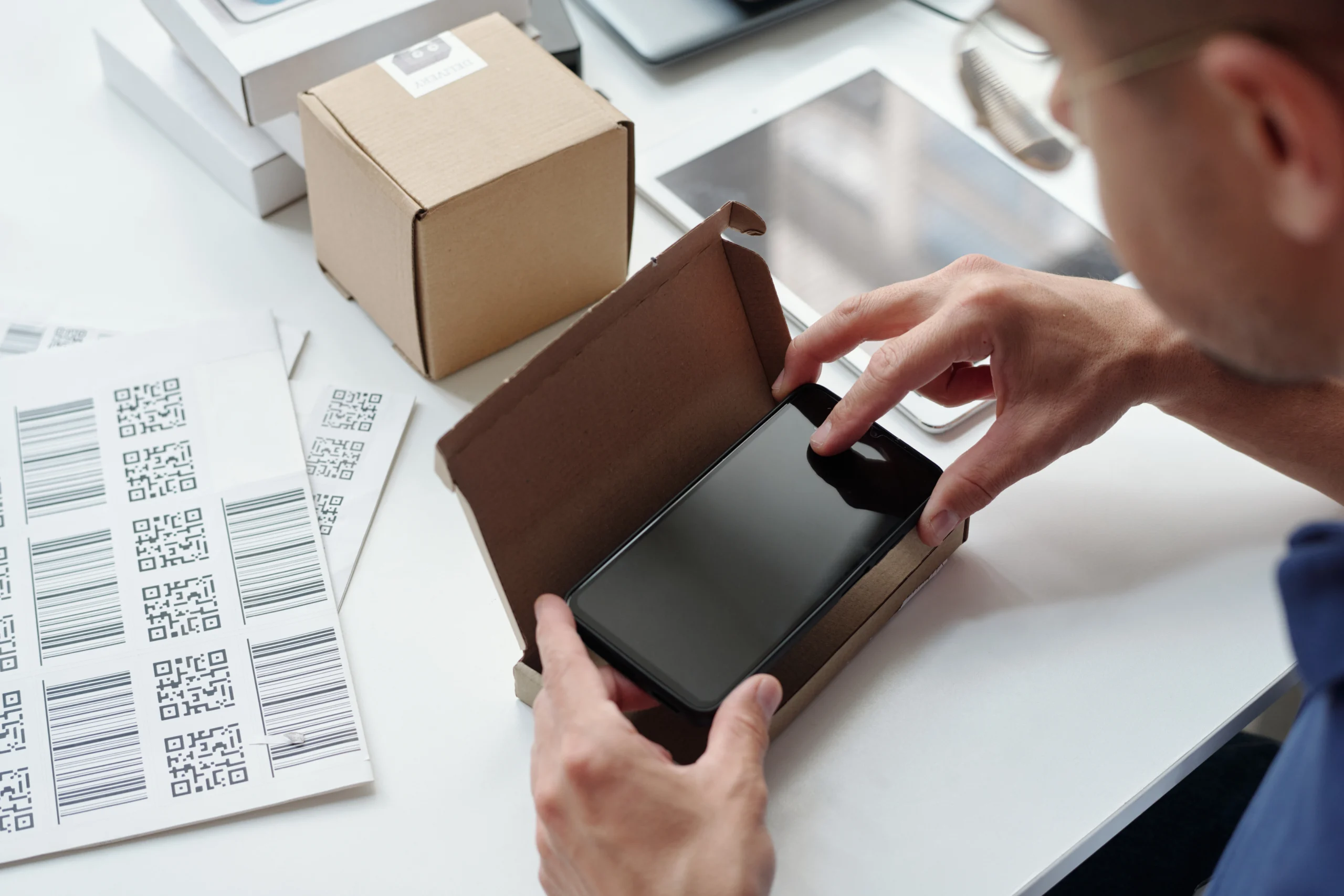Table of Contents
ToggleLabeling and barcoding refer to the use of labels and barcode technology to encode, identify, and track items in a supply chain or warehouse. A barcode is a machine-readable image that encodes product data like SKU, weight, or location.
Labeling ensures these barcodes are attached securely to products, shelves, or packages, providing visual clarity and data accuracy. Together, they form a system that streamlines inventory management, enhances traceability, and reduces manual errors.
Barcoding is not just about scanning items at a store checkout. It is an intricate system designed to simplify data entry, improve workflow, and ensure compliance with industry regulations.
Labels, on the other hand, act as the first point of identification for a product, making them an indispensable part of any modern logistics operation.

In logistics, every second counts. Time delays, misplaced inventory, and human errors can quickly snowball into significant operational inefficiencies.
Labeling and barcoding bridge these gaps by providing a seamless way to track and identify products. Over the years at Tri-Link FTZ, we’ve worked with numerous businesses that struggled with inefficiencies before adopting these technologies.
Once implemented, they saw immediate improvements in accuracy and processing times. For example, imagine a warehouse without barcodes.
Staff would need to manually input data, increasing the likelihood of errors and delays. With barcodes, a simple scan provides all necessary information in seconds.
Labeling adds another layer of clarity, ensuring products are easily identifiable. This synergy helps businesses reduce waste, improve inventory accuracy, and enhance customer satisfaction.
Without a proper labeling and barcoding system, businesses often face significant hurdles. One of the biggest challenges is the high rate of manual errors.
Entering data by hand not only consumes time but also introduces inaccuracies that can ripple through the entire supply chain. For example, a single digit entered incorrectly can result in misplaced inventory or missed shipments, leading to customer dissatisfaction.
Another issue is inefficiency in inventory tracking. Warehouses relying on outdated methods like spreadsheets or handwritten logs struggle to maintain real-time visibility.
This can result in stockouts, overstocking, or lost items. Compliance is another major concern.
Many industries, such as pharmaceuticals and food, require specific labeling standards. Failing to meet these requirements can lead to fines or recalls.
To build a robust system, businesses need the right combination of hardware, software, and strategy. First, barcode printers and scanners are essential.
Printers create durable labels that withstand environmental challenges, while scanners allow for quick data capture. At Tri-Link FTZ, we’ve seen businesses transform operations simply by upgrading their outdated printers to models that support thermal transfer labels for added durability.
Software plays a critical role, too. Inventory management systems that integrate with barcode technology provide real-time updates, automate reordering, and improve forecasting.
Labels themselves are another crucial component. High-quality materials and adhesives ensure they stay intact, even in challenging conditions like freezing temperatures or high humidity.
Symbologies, or the language of barcodes, also matter. One-dimensional (1D) barcodes like UPC codes are common in retail, while two-dimensional (2D) codes like QR codes hold more data and are ideal for complex applications like healthcare.

Choosing the right technology can be daunting, but a few guiding principles can help. Start by assessing your specific needs.
Are you managing inventory for a single warehouse, or do you oversee multiple locations with unique requirements? At Tri-Link FTZ, we often recommend scalable solutions that grow with the business.
A small operation might start with basic barcode scanners and gradually adopt advanced inventory management systems as it expands. Compatibility is another key factor.
Your labeling and barcoding system should integrate seamlessly with your existing software and workflows. For instance, many of our clients in the FTZ rely on barcode labels that include both a product identifier and country of origin to meet customs regulations.
Cost-effectiveness is also critical. While it’s tempting to opt for the cheapest option, investing in high-quality equipment and software pays off in the long run. To read click here.
Implementing a labeling and barcoding system begins with a comprehensive needs assessment. At Tri-Link FTZ, we often help clients identify bottlenecks and inefficiencies in their current processes.
Once needs are established, the next step is selecting the right hardware and software. For instance, if you’re labeling products in a cold storage facility, you’ll need labels designed to withstand freezing temperatures.
Designing labels is another crucial step. This involves determining what information to include, such as SKU, product name, and batch number.
Training is also vital. Employees need to understand how to use barcode scanners and manage the software effectively.
Finally, regular monitoring and optimization ensure the system continues to meet business needs as operations evolve.
The benefits of labeling and barcoding extend far beyond operational efficiency. One of the most significant advantages is improved accuracy.
By reducing manual errors, businesses can save time and resources. At Tri-Link FTZ, we’ve seen companies cut inventory discrepancies by over 90% after implementing barcoding systems.
Barcoding also enhances traceability, a critical factor in industries like food and pharmaceuticals. For example, in the event of a recall, barcodes allow businesses to trace affected products quickly and efficiently.
Other benefits include faster picking and packing, reduced labor costs, and better compliance with regulatory standards.

Compliance is a non-negotiable aspect of modern logistics, especially for businesses operating in regulated industries. At Tri-Link FTZ, we regularly assist clients in meeting stringent labeling requirements mandated by customs and industry standards.
Labels must include critical details such as product origin, batch numbers, and expiry dates to ensure products meet global trade and safety regulations. For instance, the FDA requires clear labeling for pharmaceuticals, including barcodes that enable rapid identification and tracking of medications.
Similarly, food packaging must display accurate nutritional information, while eco-labels highlight sustainability efforts. Compliance not only protects businesses from penalties but also fosters trust with consumers by ensuring transparency and reliability.
Investing in a labeling and barcoding system might seem costly upfront, but the long-term ROI is undeniable. At Tri-Link FTZ, we’ve worked with businesses that recovered their investment within months due to improved efficiency and accuracy.
Reduced labor costs are one of the most immediate benefits, as barcode scanning significantly decreases the time spent on manual data entry and inventory checks. Additionally, these systems prevent costly errors.
For example, a single shipment mistake can result in penalties or customer dissatisfaction. By implementing barcoding, businesses can avoid these pitfalls.
Furthermore, streamlined inventory management improves cash flow by optimizing stock levels, ensuring you’re never over- or under-stocked.
Over the years, Tri-Link FTZ has supported numerous businesses in transforming their operations through labeling and barcoding. One example is a manufacturing client who struggled with tracking components across multiple production lines.
After adopting a barcoding system, they were able to monitor work-in-progress inventory in real time, reducing waste and improving output. Another success story comes from a retail client who implemented shelf barcoding in their warehouse.
This allowed staff to locate products quickly, cutting picking times by 50%. These examples demonstrate how labeling and barcoding systems can address unique challenges across industries, ultimately driving growth and efficiency. To read more click here.

Implementing a labeling and barcoding system is just the beginning. To maximize its benefits, businesses must commit to regular maintenance and upgrades.
At Tri-Link FTZ, we recommend periodic reviews of hardware and software to ensure compatibility with evolving technology. For example, upgrading to mobile barcode scanners with advanced capabilities can further enhance productivity.
Employee training is another crucial aspect of maintenance. As new features or tools are introduced, staff must be equipped with the knowledge to use them effectively.
Regularly assessing label durability and performance ensures your system remains reliable, even in challenging conditions like high humidity or extreme temperatures.
Labeling and barcoding are transformative tools for any business aiming to streamline operations and improve accuracy. At Tri-Link FTZ, our 35 years of experience in third-party logistics have shown us just how impactful these systems can be.
From reducing errors to enhancing compliance, the benefits are clear. If you’re ready to take your operations to the next level, we’re here to help.
Whether you need guidance on selecting the right technology or assistance with implementation, our team has the expertise to support you. Contact us today to learn more about how labeling and barcoding can revolutionize your logistics.
Share this article
We have other resources available upon request as well as one-on-one support and personalized answers, just like our services.
Simply contact us anytime and we’ll get back to you to answer your questions and provide meaningful answers that show you how Tri-Link supports your logistics, reduces costs, and accelerates efficiency.
Tri-Link delivers exceptional FTZ and 3PL services tailored to your global trade needs.
Our solutions combine innovation, quality, and efficiency to exceed your expectations and meet your specific requirements.